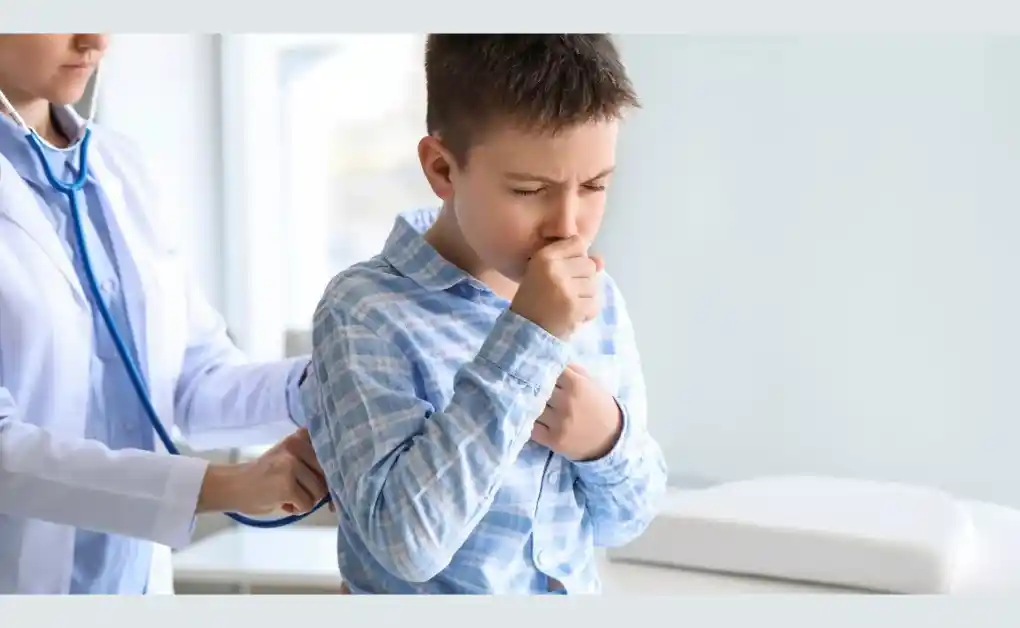Whooping cough cases have surged in the U.S., with the number of infections more than quadrupling compared to last year, according to the latest whooping cough news from the Centers for Disease Control and Prevention (CDC). Experts believe this spike is linked to a drop in vaccination rates during the COVID-19 pandemic, as many families missed routine check-ups and shots.

Missed Vaccinations During the Pandemic Led to an Increase in Whooping Cough Cases
The rise in whooping cough cases, also known as pertussis, is being blamed on the fact that many children didn’t get their routine vaccinations during the pandemic. With lockdowns, remote learning, and a focus on preventing the spread of COVID-19, a lot of families delayed regular doctor visits.
“Kids just weren’t seeing their healthcare providers in person as much during COVID,” said Dr. William Schaffner, an infectious diseases expert at Vanderbilt University Medical Center. “And while telemedicine was a helpful tool, you can’t vaccinate someone through a computer screen. We still haven’t caught up to pre-pandemic vaccination levels.”
The Role of Whooping Cough Vaccines in Protecting Against the Disease
Vaccination remains the most effective way to protect against whooping cough. The DTaP and Tdap vaccines help shield people from pertussis as well as diphtheria and tetanus. Despite concerns that these vaccines may not offer long-lasting protection, they are still the best defense we have against the severe complications of the disease.
The increase in whooping cough cases is bringing infections back to pre-pandemic levels, when the U.S. would typically report over 10,000 cases each year. According to CDC data from July, this year has already seen 14,569 cases—up significantly from just 3,475 cases last year.
Which States Are Seeing the Most Cases?
Pennsylvania, New York, and California are currently leading the nation in the number of infections. Pennsylvania tops the list with 2,008 cases reported this year—nearly double that of California.
Why Whooping Cough is Hard to Spot Early On
One of the reasons whooping cough cases can spread so easily is because the early symptoms often look just like a common cold or other respiratory illness. This can make it tricky to identify and treat in the initial stages, says Dawn Nolt, a professor of pediatric infectious diseases at Doernbecher Children’s Hospital in Portland, Oregon.
“The first week of illness looks like any other respiratory disease,” Nolt explained. “By the time you realize it might be whooping cough, you’ve likely already spread it to others.”
What Sets Whooping Cough Apart from Other Illnesses
Unlike other respiratory infections, whooping cough is known for its intense and long-lasting coughing fits, which can last at least three weeks and sometimes go on for months. Dr. Schaffner described these coughing spells as “cough seizures” that can be exhausting and make it hard to breathe.
“It’s not just a couple of coughs,” he said. “It’s a series of rapid coughs, one after another, so much so that you can’t catch your breath. And when you finally do, you make that ‘whoop’ sound as you inhale.”
Babies may show different symptoms, often struggling to breathe or even stopping breathing for brief periods rather than having the intense coughing fits seen in older children and adults.
Whooping Cough Vaccines: Who Should Get Them and When?
The CDC recommends the DTaP vaccine for babies and children under 7 years old, while older kids and adults should get the Tdap vaccine as well as a booster every 10 years. The most severe whooping cough cases tend to occur in infants whose tiny airways can easily become blocked.

Since babies cannot get vaccinated until they are at least 2 months old, the CDC advises that pregnant people receive the Tdap vaccine during the last trimester of every pregnancy to help protect newborns from the moment they are born.
Conclusion: Why It’s Important to Stay Up-to-Date on Vaccinations
The increase in whooping cough cases serves as a reminder of the importance of keeping up with routine vaccinations. While COVID-19 disrupted many aspects of life, including healthcare, now is the time to get back on track. Staying up-to-date with whooping cough vaccines can help protect vulnerable populations, especially babies, from this serious respiratory infection.
The recent news about whooping cough highlights the need for everyone to check their vaccination status and ensure they and their children are protected. Vaccination not only helps prevent the disease but also stops the spread, protecting those who are most at risk.
FAQs
What is causing the increase in whooping cough cases in the U.S.?
The increase in whooping cough cases is mainly due to a drop in vaccination rates during the COVID-19 pandemic. Many children missed their routine vaccinations as families delayed doctor visits and healthcare providers focused on preventing the spread of COVID-19.
How do you say whooping cough, and what are its symptoms?
Whooping cough, also known as pertussis, is pronounced “hooping koff.” It starts with cold-like symptoms such as a runny nose, sneezing, and a mild cough, but progresses to severe coughing fits that can last for weeks. The name comes from the “whoop” sound made when gasping for air after a coughing spell.
How effective are whooping cough vaccines?
Whooping cough vaccines like DTaP and Tdap provide strong protection against the disease, though there are concerns about their effectiveness waning over time. Despite this, they remain the best way to prevent severe complications and stop the spread of pertussis.
Who is most at risk for severe whooping cough?
Infants are at the highest risk for severe cases of whooping cough. Their small airways can easily become blocked, leading to breathing difficulties. The CDC recommends that pregnant people get vaccinated in the third trimester to help protect newborns until they are old enough to receive their first DTaP shot.
Which states have the highest number of whooping cough cases?
As of this year, Pennsylvania, New York, and California are seeing the most whooping cough cases in the U.S., with Pennsylvania reporting the highest number of infections.